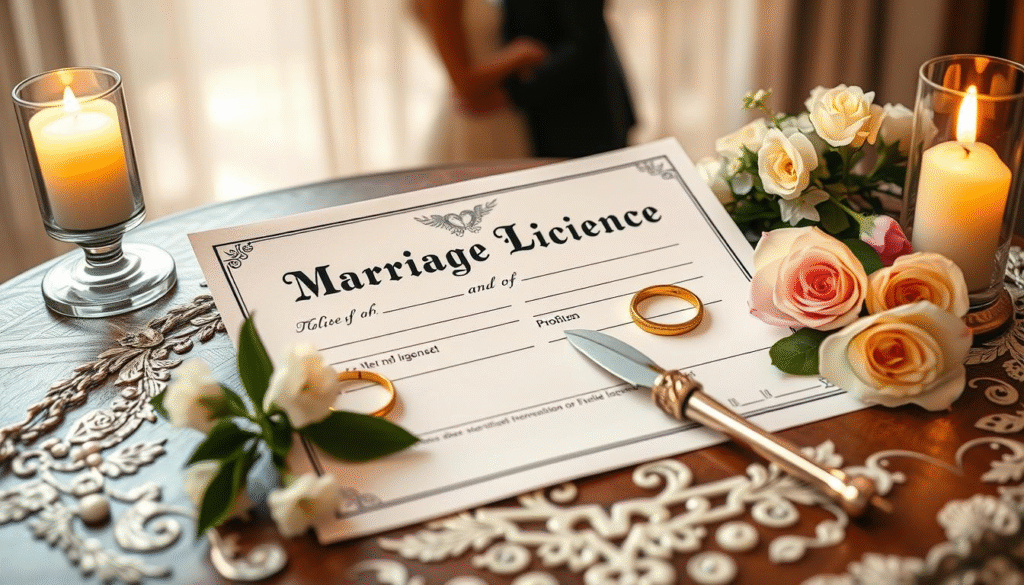Nearly 40% of marriages in the United States end in 10 Years of Marriage and Divorced. This shows the big challenges many couples face in keeping their relationship strong for a long time.
Looking into a decade-long marriage, we see that dealing with marriage problems is key to a successful partnership.

We will find important insights and successful marriage tips. These can help couples build a stronger, more lasting bond.
Key Takeaways
- Understanding the common challenges faced by couples in long-term marriages.
- Identifying effective strategies for overcoming marriage problems.
- Gaining insights from couples who have navigated divorce.
- Learning valuable tips for maintaining a successful marriage.
- Recognizing the importance of communication in sustaining a healthy relationship.
The Reality of Long-Term Relationships
Couples in long-term relationships face many challenges. It’s important to understand how their bond changes over time. Each stage brings its own set of problems and chances for growth.
How Marriages Evolve Over a Decade
Marriages change a lot over the years. At first, couples feel a strong emotional connection. But as time goes on, their bond becomes deeper and more mature.
Yet, marriage problems can happen if couples don’t adjust to these changes.
Identifying the Stages of Long-Term Commitment
Long-term commitment has different stages. There’s the romantic phase, the disillusionment phase, and the adjustment phase. Knowing these stages can help couples strengthen their relationship.
Setting Realistic Expectations for Partnership
To have a successful marriage, couples need to set realistic goals. They should understand that relationships have ups and downs. Successful marriage tips often talk about the need for good communication, trust, and respect.
By understanding the stages of commitment and adapting to their relationship’s changes, couples can build a stronger bond. Good communication and a desire to grow together are essential.
10 Years of Marriage and Divorce: What the Statistics Reveal
Looking at divorce after ten years of marriage shows interesting trends. The “10-year itch” plays a big role in many divorces.
Understanding the “10-Year Itch” Phenomenon
The term “10-year itch” means couples often split around the ten-year mark. Studies show this is a key time for many to reevaluate their marriage.
Studies have shown the “10-year itch” is real. It affects many marriages. Reasons include growing apart, money issues, and poor communication.
Common Triggers for Divorce After a Decade
Many things lead to divorce after ten years. Financial disagreements and infidelity are big ones. So is lack of intimacy. Knowing these can help couples fix problems before they get too big.
How American Divorce Rates Have Changed
American divorce rates have changed a lot over time. The rate of divorce after ten years has gone up and down. Changes in societal attitudes and economic factors have played a part.
Now, divorce lawyers often work with couples married over a decade. This shows how complex long-term marriages and divorces can be.
Recognizing Early Warning Signs in Your Relationship
As couples deal with the ups and downs of long-term relationships, spotting early warning signs is key. After a decade together, things can get even more complicated. It’s vital to catch problems early to avoid bigger issues later.
Communication Patterns That Signal Trouble
Good communication is the heart of any strong relationship. But, some patterns can hint at bigger issues. For example, always being defensive, dismissive, or showing contempt can harm your bond. Active listening and clear communication are essential to prevent misunderstandings and resentment.

How to Identify Emotional Disconnection
Emotional disconnection can sneak up on you, making you feel alone in your relationship. Signs include less intimacy, less emotional support, and feeling left out of your partner’s life. To fight this, make time for each other and do things that bring you closer.
Financial Conflicts That Predict Relationship Stress
Money problems can stress out many couples. Differences in spending, financial goals, and priorities can cause tension. It’s important to tackle these issues in a positive way.
Addressing Money Disagreements Constructively
To handle money conflicts well, first figure out what’s causing the problem. Making a joint budget that works for both can help. Regular money talks can also keep you both in sync, reducing stress in your relationship.
How to Approach Marriage Counseling Effectively
Seeking marriage counseling is a proactive step to strengthen a long-lasting relationship. After 10 years, couples face new challenges. Marriage counseling offers a supportive space to tackle these issues.
Finding the Right Therapist for Your Situation
Finding the right therapist is key for successful marriage counseling. Look for someone who specializes in couples, focusing on long-term marriages. It’s important to find a therapist both partners feel comfortable with.
Preparing for Your First Counseling Session
Before the first session, discuss what you hope to achieve. Being open about your concerns and expectations helps tailor the sessions. Preparation is essential for a productive first session.
Measuring Progress in Therapy
Progress in marriage counseling shows in better communication and conflict resolution. Regularly check your progress with your therapist. Adjust your approach as needed.
When to Consider a Different Approach
If current therapy isn’t working, it’s time to try something new. Flexibility and openness to new methods are vital for success in marriage counseling after 10 years.

Making the Decision: Steps to Evaluate Your Marriage
Deciding whether to stay or leave a marriage after 10 years is a big choice. Couples at this point often check if their relationship is working well.
To make a good choice, start by conducting a relationship inventory. Look at how you talk, how close you feel, how you manage money, and how you solve problems.
Conducting a Relationship Inventory
A detailed relationship inventory shows what’s good and what’s not. Think about these things:
- Communication: Can you talk about problems well?
- Emotional Intimacy: Do you feel close and supported?
- Conflict Resolution: How do you solve fights, and is it done well?
Weighing the Costs and Benefits of Staying
After finding out what’s good and bad, think about the costs and benefits of staying. Consider how your choice affects your feelings, money, and social life.
| Factors | Benefits of Staying | Costs of Staying |
| Emotional Well-being | Support and stability | More fights |
| Financial Considerations | Shared money and duties | Money problems from fights |
| Social Implications | Keeping friends and family | Divorce shame |
How to Have the “Should We Continue?” Conversation
Talking openly about your marriage’s future is key. Be kind and listen to each other’s views and feelings.

By carefully looking at your marriage and talking about it, you can decide its future wisely.
Navigating the Legal Process of Divorce After a Decade
Getting a divorce after a long marriage needs careful planning and expert help. It’s important to know the legal side of ending a decade-long relationship.
Understanding Long-Term Marriage Legal Implications
Divorces after 10 years get more complicated. Issues like dividing assets, spousal support, and retirement benefits come up. For example, the Social Security Administration lets divorced spouses get benefits if the marriage lasted 10 years or more.
How to Select the Right Divorce Attorney
Finding the right divorce lawyer is key to protecting your rights. Look for lawyers who focus on long-term marriage divorces and have experience with complex cases.
Preparing Your Financial Documents
To deal with the financial side of divorce, you need to gather all important financial documents. This includes:
- Bank statements
- Investment accounts
- Retirement plans
- Property deeds
Mediation vs. Litigation: Choosing Your Path
Couples have two main choices for divorce: mediation and litigation. Mediation means working with a neutral third-party to find a settlement. Litigation means going to court and having a judge decide. Mediation is often less expensive and less stressful, but litigation might be needed for big conflicts or complex legal issues.

Knowing the differences between mediation and litigation can help you decide how to handle your divorce.
Protecting Children Through Divorce Transitions
Divorce can deeply affect children, even more so after a decade together. It’s vital for parents to focus on their kids’ emotional health during this tough time.
Children often struggle with divorce, having grown used to their family’s way of life. Open and honest communication is key to helping them adjust to the new reality.
How to Tell Your Children About Divorce
When telling your kids about divorce, be empathetic and clear. Think about their age and how mature they are. Reassuring them of your love and support can ease their anxiety.
Creating Stability Through Consistent Routines
Keeping familiar routines can offer stability and comfort to kids during this change. This includes regular mealtimes, bedtime, and family activities. Consistency helps kids feel secure.
Here’s an example of how consistent routines can be maintained:
| Routine | Pre-Divorce | Post-Divorce |
| Breakfast Time | 7:00 AM Together | 7:00 AM at both homes |
| Bedtime | 8:00 PM | 8:00 PM at both homes |
| Family Activities | Weekly dinners together | Alternate weekends with each parent |
Developing Effective Co-Parenting Strategies
Effective co-parenting is essential for your children’s emotional well-being. This means coordinating with your ex-partner on parenting decisions. It also involves consistent rules and discipline, and presenting a united front to your children.
Recognizing When Children Need Additional Support
Some kids might need extra help during this time. Look for signs like becoming more withdrawn or aggressive. Seeking professional help from a child therapist or counselor can be beneficial.
By being proactive and supportive, we can help our children get through the challenges of divorce and come out stronger.
Rebuilding Your Financial Life Post-Divorce
After a divorce, rebuilding your finances takes several steps. Financial conflicts often lead to divorce. It’s key to manage your money wisely after a split.
Creating a Post-Divorce Budget
Start by making a budget that fits your new financial situation. Track your income and expenses to see where your money goes.
It’s smart to sort your spending into needs (like housing and food) and wants (like entertainment). This helps you focus on what’s important.
Managing Asset Division After a Decade Together
Dividing assets after a long marriage is tricky. Knowing the legal implications of asset division is vital for your financial future.
Get advice from a financial advisor. They can help divide assets fairly and guide you on tax issues.
Retirement Planning Adjustments
A divorce can change your retirement plans. You need to rethink your retirement goals and adjust your savings plan.
Insurance and Estate Planning Updates
Update your insurance and estate plans after a divorce. Change beneficiaries on life insurance and retirement accounts to reflect your new status.
Steps for Emotional Healing After Divorce
Healing from a divorce takes time and effort. It involves moving through stages like grief and self-discovery. The emotional impact of divorce can be deep, even after a long marriage.
Processing the Stages of Grief
Ending a long marriage can make us grieve. Acknowledging the loss is the first step to healing. We go through denial, anger, bargaining, depression, and acceptance.
Building a Supportive Community
Having a supportive community is key. This can be friends, family, or support groups. Connecting with others who have gone through similar things offers comfort and insights.
Rediscovering Your Individual Identity
After a long marriage, we often forget who we are. Rediscovering personal interests and passions is a big step in healing. Trying new hobbies or revisiting old ones helps us reconnect with ourselves.
When to Seek Professional Mental Health Support
If the pain feels too much, getting professional help is a good idea. Mental health professionals offer strategies and support. Signs you might need help include feeling sad all the time, hopeless, or unable to do daily tasks.
| Signs Indicating Need for Professional Support | Description |
| Persistent Sadness | Feeling sad or empty for an extended period |
| Hopelessness | Feeling a lack of hope for the future |
| Inability to Perform Daily Tasks | Struggling to carry out daily routines and responsibilities |
Applying Our Lessons to Create Successful Relationships
Looking into long-term partnerships reveals important strategies for lasting relationships. We’ve talked about the ups and downs of marriages lasting over a decade. Now, we can use these lessons to help build successful relationships.
Communication Practices That Strengthen Bonds
Communication is key in any successful marriage. Couples should listen actively, speak clearly, and solve conflicts well. This way, they can grow closer and face life’s challenges together.
Maintaining Intimacy Through Life Changes
Keeping intimacy alive during life’s changes can be tough. But, by making time for each other and being flexible, couples can keep their bond strong. This is vital for a healthy relationship.
How to Grow Together Instead of Apart
Growing together means both partners must grow together. They can do this by trying new things, supporting each other’s dreams, and staying united. Regular relationship check-ins are also helpful.
Creating Relationship Check-ins That Work
To make relationship check-ins work, couples should set regular times to talk about their feelings and goals. This keeps communication open and solves problems early. By doing this, couples can grow together, not apart.
Conclusion: Embracing Growth Through Challenge
Looking back at long-term relationships, we see that facing challenges is key to success. Our journey through 10 years of marriage and divorce shows the importance of understanding each stage. It also highlights the need to spot early signs of trouble and handle the legal and emotional sides of divorce.
Healing emotionally after a divorce is a big step forward. Going through the stages of grief, finding a supportive community, and rediscovering who you are helps. This way, people can come out of tough times stronger and more ready for life.
The lessons from 10 years of marriage and divorce can help make relationships better. By talking openly, staying close through changes, and growing together, couples can build a stronger bond. This makes their partnership more resilient and fulfilling.
FAQ
What are the common triggers for divorce after a decade of marriage?
Common reasons for divorce after 10 years include poor communication, money problems, cheating, and feeling disconnected. Knowing these can help couples fix issues before they get worse.
How can couples recognize early warning signs in their relationship?
Couples should watch for changes in how they talk, feeling emotionally distant, and money issues. These signs can mean trouble. Spotting them early can help fix problems.
What are the benefits of marriage counseling, and how can we approach it effectively?
Marriage counseling can really help couples with problems. To get the most out of it, find a good therapist, prepare for your first session, and track your progress.
How can we protect our children during the divorce transition?
It’s important to keep kids safe during divorce. Tell them gently, keep routines the same, and work well together as parents.
What are the key considerations for rebuilding our financial life post-divorce?
After divorce, make a budget, sort out assets, and plan for retirement. Also, update insurance and estate plans to stay financially stable.
How can we process the emotional impact of divorce after a decade of marriage?
Let yourself grieve, build a support network, and find who you are again. Professional help can also be very helpful.
What steps can we take to create a successful relationship in the future?
To build a strong future relationship, talk well, stay close despite life’s changes, and grow together. Regular check-ins can keep your bond strong.
How do we know if we should continue our marriage or consider divorce?
Take stock of your relationship, weigh the pros and cons of staying, and talk openly about your future.
What are the legal implications of divorce after a long-term marriage?
Understand how divorce affects your assets, support, and retirement. Choose the right lawyer and get your finances in order for a smoother process.
How can we navigate the legal process of divorce after 10 years of marriage?
Consider mediation, know the legal aspects of long-term marriage, and get your finances ready for a smoother divorce.





